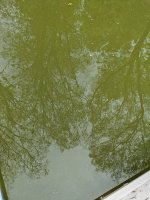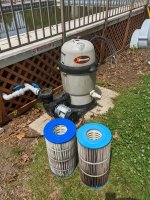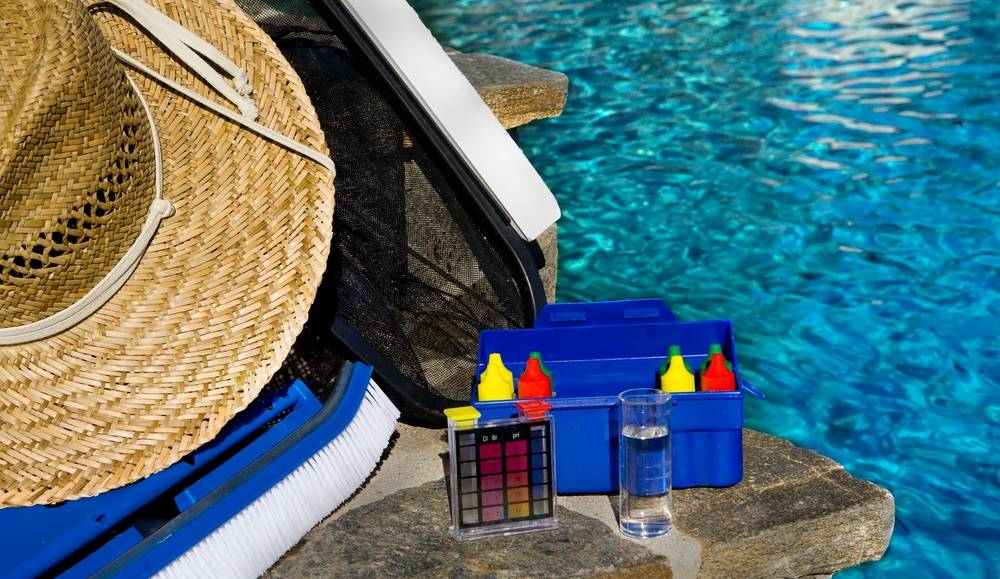Hi folks, hope I picked the right spot to post this, & apologies for rudely hopping into the community just to desperately cry for help.
I'm not really the pool-knowledgeable-person in our household, but my husband seems to think he's already doing everything he reasonably can about this problem; and I just hate to give up when past experience has shown that some creative internet research can turn up some fabulously useful, but less-well-known, advice. My Google skills are coming up short, though--all my various keyword combos are turning up the same stupid fact-sheets & local news blurbs about these dang caterpillars, with all the information that I am already perfectly familiar with.
So, our problem: Many of you are probably familiar with the blight of the Spongy Moth Caterpillar (formerly Gypsy Moth). They suck, we hate them, the population explodes for a few years every once in a while and they defoliate oaks and make it highly unpleasant to be outdoors in areas they've infested. Yadda yadda.
Well, last year (year one of the outbreak in our area) the explosion of caterpillars didn't happen till a little later in the season, after our pool had already been opened. They still made the pool exponentially harder to take care of, but it remained swimmable, with daily skimming and almost daily swapping out & hosing down the pool pump filter.
This year, the caterpillar population exploded right as the pool was getting opened, and we watched as the poolwater, after getting shocked & running the pump constantly, turned from emerald green to swampy brown to black over the course of the next week or two. All the frass (caterpillar poop) & caterpillar hairs/bodies from the oak trees overhead have been more than the filter can handle, even with swapping it & cleaning it (rotation of 2-3 different filters) daily or every other day, running the pump most of every day.
They seem to have almost all pupated as of a week or two ago, but we still haven't seen any improvement in the appearance of the poolwater. Husband still has to shower those irritating caterpillar spines off his arms after each filter cleaning, because there are still that many in the water.
Anyone have suggestions or wisdom to offer? Many thanks.
I'm not really the pool-knowledgeable-person in our household, but my husband seems to think he's already doing everything he reasonably can about this problem; and I just hate to give up when past experience has shown that some creative internet research can turn up some fabulously useful, but less-well-known, advice. My Google skills are coming up short, though--all my various keyword combos are turning up the same stupid fact-sheets & local news blurbs about these dang caterpillars, with all the information that I am already perfectly familiar with.
So, our problem: Many of you are probably familiar with the blight of the Spongy Moth Caterpillar (formerly Gypsy Moth). They suck, we hate them, the population explodes for a few years every once in a while and they defoliate oaks and make it highly unpleasant to be outdoors in areas they've infested. Yadda yadda.
Well, last year (year one of the outbreak in our area) the explosion of caterpillars didn't happen till a little later in the season, after our pool had already been opened. They still made the pool exponentially harder to take care of, but it remained swimmable, with daily skimming and almost daily swapping out & hosing down the pool pump filter.
This year, the caterpillar population exploded right as the pool was getting opened, and we watched as the poolwater, after getting shocked & running the pump constantly, turned from emerald green to swampy brown to black over the course of the next week or two. All the frass (caterpillar poop) & caterpillar hairs/bodies from the oak trees overhead have been more than the filter can handle, even with swapping it & cleaning it (rotation of 2-3 different filters) daily or every other day, running the pump most of every day.
They seem to have almost all pupated as of a week or two ago, but we still haven't seen any improvement in the appearance of the poolwater. Husband still has to shower those irritating caterpillar spines off his arms after each filter cleaning, because there are still that many in the water.
Anyone have suggestions or wisdom to offer? Many thanks.


 I can't imagine how frustrated you must be by now!
I can't imagine how frustrated you must be by now!








